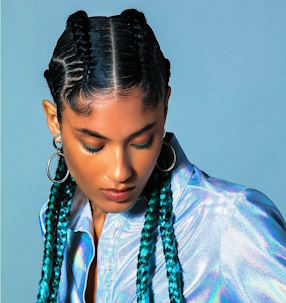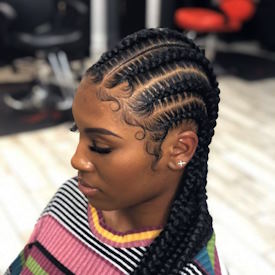As you embrace the allure of feed-in braids, understanding the nuances of their care becomes imperative for a lasting and stylish outcome. Beyond the initial excitement of a new hairstyle, it’s the commitment to maintenance that transforms a one-time style into a staple in your beauty repertoire. Whether you’re a braiding enthusiast looking to perfect your technique or a newbie exploring the world of protective styles, join us on a comprehensive exploration of tips and tricks designed to keep your feed-in braids not only looking impeccable but also promoting the health of your natural hair underneath. From pre-braiding considerations to a well-crafted aftercare routine, let’s unlock the secrets to maintaining those mesmerizing feed-in braids with grace and confidence.
Washing and Conditioning
Ensure the health and longevity of your feed in braids styles with more info here on the proper washing and conditioning routines. Firstly, consider the frequency of washing – aim for every two to three weeks to prevent frizz and keep your scalp clean. Washing too often may lead to the unraveling of your braids, causing them to lose their neatness and shape.
 Choosing the right shampoos and conditioners is equally important. Opt for sulfate-free and moisturizing products to keep your natural hair and braids hydrated. Look for formulations that are gentle on the scalp to avoid irritation and dryness.
Choosing the right shampoos and conditioners is equally important. Opt for sulfate-free and moisturizing products to keep your natural hair and braids hydrated. Look for formulations that are gentle on the scalp to avoid irritation and dryness.
When it comes to washing, follow these tips for a gentle yet effective cleanse. Dilute your shampoo with water to create a milder solution, and apply it carefully to the scalp without disturbing the braids. Focus on massaging the scalp between the parts to remove any buildup. Conditioner application should be concentrated on the ends to keep the extensions nourished without weighing down the roots.
Remember, a careful washing and conditioning routine will not only preserve the neatness of your feed-in braids but also promote overall hair health.
Nighttime Routine
Your nighttime routine is a crucial component of maintaining the pristine condition of your feed-in braids. Recognizing the importance of protecting your braids during sleep is the first step towards ensuring their longevity. Sleep friction can lead to frizz and unraveling, compromising the integrity of your carefully styled braids.
Consider investing in a satin or silk scarf or bonnet for your nighttime hair protection arsenal. These materials are known for their smooth texture, reducing friction and preventing unnecessary stress on your braids. Securing your braids with a scarf or bonnet not only shields them from friction but also helps maintain their shape, ensuring you wake up with a flawless look.
If scarves or bonnets aren’t your preference, satin pillowcases offer a convenient alternative. The silky surface minimizes friction between your hair and the pillow, reducing the risk of tangles and frizz. This option is particularly useful if you find traditional head coverings uncomfortable or if you want a low-maintenance solution for preserving your feed-in braids while you sleep.
Styling Options and Limitations
 Styling your feed-in braids opens up a world of creative possibilities while contributing to their longevity. Opt for hairstyles that complement the intricate nature of feed-in braids, such as high buns, ponytails, or even half-up, half-down styles. These not only showcase your braids but also protect them from excessive friction and wear.
Styling your feed-in braids opens up a world of creative possibilities while contributing to their longevity. Opt for hairstyles that complement the intricate nature of feed-in braids, such as high buns, ponytails, or even half-up, half-down styles. These not only showcase your braids but also protect them from excessive friction and wear.
While experimenting with styles is encouraged, it’s crucial to avoid excessive manipulation. Constant pulling, tight hairstyles, or frequent changes can lead to strain on your natural hair and the braids, potentially causing breakage. Opt for gentler styling options that allow your hair to breathe and maintain its health.
Consider the duration for keeping feed-in braids in place. While these braids are renowned for their durability, keeping them installed for too long may lead to tangling and matting. Aim for a maximum of 6-8 weeks before giving your hair a break. Regularly inspect your braids for any signs of damage or tension, and consult with a professional stylist if needed.

